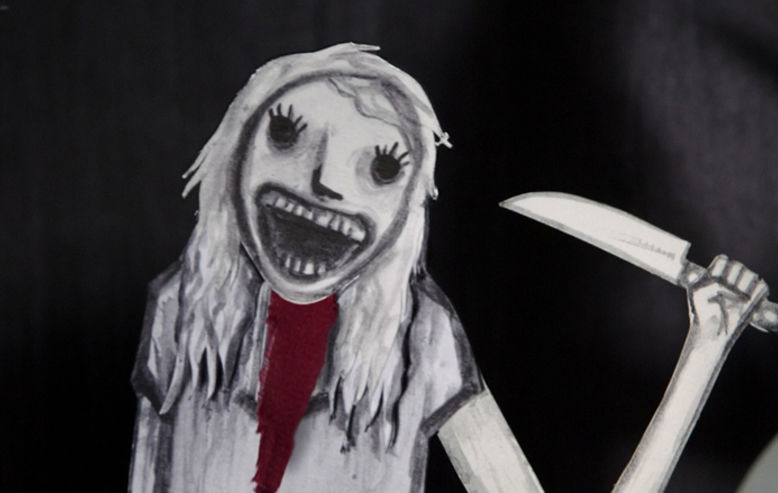This article is from our friends at Trunkworthy
The Babadook is the most genuinely terrifying thing to come out of movie darkness since Norman Bates first started chattering on about his taxidermy collection.
Being genuinely terrified at the movies is a rare phenomenon and one of mankind’s more oddly enticing endeavors. Unfortunately, like the first flush of obsessive love, it is a condition most commonly encountered by teenagers and the very young. By the time we reach adulthood, we tend to be inoculated from such pure experience. We are too aware of the tricks—the cat in shadows, the blood squibs hidden in sweaty T-shirts—to really feel it in our bones and blood. Besides, by that point in our lives, most of us would gladly take a guy hiding in the curtains to, say, the slow-drip monthly panic of an underwater mortgage.
But in truth, it is at midlife that the most horrifying monsters truly begin to take shape. The Babadook, which has been rightly lauded since exploding out of last year’s Sundance Film Festival as the scariest movie in the memory of anyone who’s seen it, is one of the few films to properly recognize this fact. By midlife, the traumas and terrors that have fueled movie monsters from Nosferatu to Jason Voorhees have calcified and grown toxic. By then, many of us, like Babadook’s beleaguered heroine Amelia, have invited home the devil itself in the form of offspring, which, despite how adorable they seem in Facebook posts, are sleep-sucking, ever-demanding pits of unknown. Yes, we love them with every ounce of our being, but their mere presence unlocks a box of terrors we never even knew existed.
The arrival of wide-eyed Samuel—an almost seven-year-old who spends the first half of the movie as an amalgam of The Shining’s Danny and The Omen’s Damien—was more traumatic than most: his father died in a car wreck on the way to the hospital the day he was born. Now, the father’s gaping absence is made manifest in his son’s obsession with unseen monsters and generally creepy behavior, including jury-rigging a collection of weapons that he insists on taking to school. When one monster in particular reveals itself at bedtime in a pop-up book of unknown origin, Amelia and Samuel do battle with a force so much more brutal and terrifying than any of the creatures that haunt their fevered dreams.
To be clear, despite the film’s setup, Mister Babadook is no metaphor; this monster is as real as a heart attack, shattered auto glass, or a busted water heater. Existing chiefly in darkness and quick glances, he looks like a fuzzy combination of Johnny Depp creations from the Mad Hatter to Edward Scissorhands, but with the soft whimsy bled out of it. The Babadook gets inside of you; he puts glass in your soup and makes roaches come out of your walls. He is, in short, the most terrifying thing to come out of movie darkness since Norman Bates first started chattering on about his taxidermy collection.
It’s absolutely correct to cite Hitchcock and Kubrick here: first-time Aussie writer-director Jennifer Kent, expanding her short film Monster, displays a similar degree of mastery. The pacing, the sound mix, the performances—it’s impossible to imagine any one filmmaking element being done better than it is here. And one can hardly express the relief of watching a horror movie free of the easy, nubile-in-distress misogyny the genre typically forces on us. The Babadook is closer to a feminist fable. But really, it’s just a scary-ass movie—“more frightening than The Shining,” as my waiting-to-hear-about-tenure, paid-too-much-for-a-condo friend said to me after we finished watching late one Thursday, his kid home with the flu.
Believe me, he would know.










